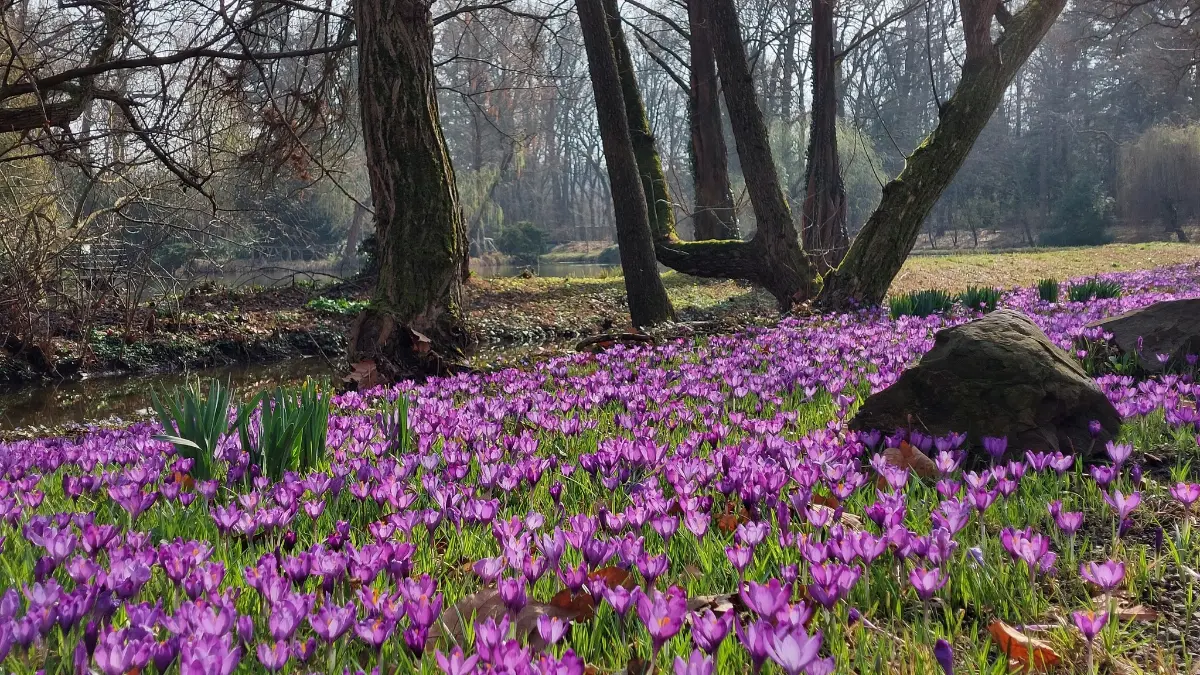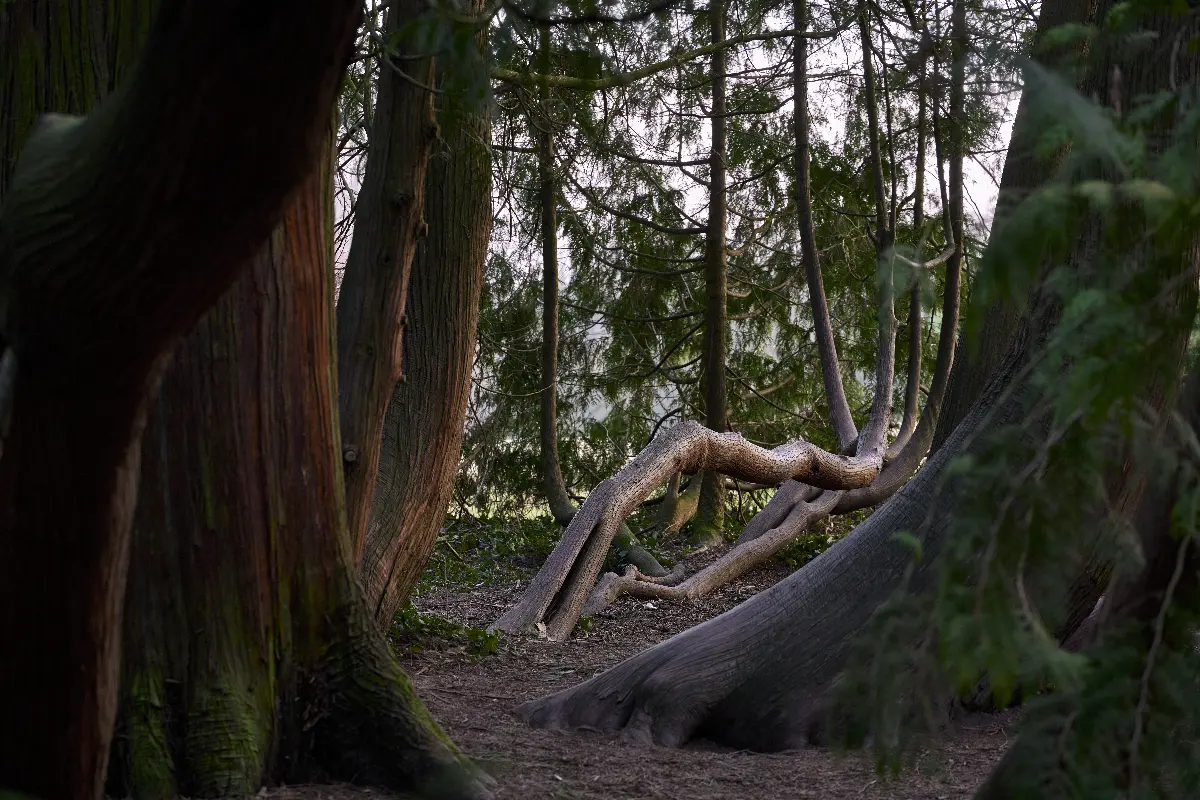
Helyszín címkék:
The magical world of collection gardens
Hajdú Gábor
Collection gardens are a special group of our historic gardens. In the 19th century, an increasing number of small and large castle gardens were established, whose collection period still provides a defining sight and experience. Plant-loving owners have planted an increasing number of special plants from distant landscapes, known as “exotics”. Greenhouses appeared in castle parks, which allowed the import of plants that could not have survived in our climate.
Tomatoes on chalky sands
The National Botanical Garden in Vácrátót still preserves its original splendour. The almost 200-year-old sentimental landscape garden now contains almost 12,000 species and varieties. The listed and protected scientific collection of living plants is the flagship of the national collection gardens. The garden was significantly enriched in the 1870’s by Count Sándor Vigyázó, who enjoyed and developed the garden in Rátót for fifty years. A broad-minded and highly educated man, Sándor Vigyázó loved nature and as a young man he visited many of the major parks of Western Europe. He wanted to provide a worthy home for his wife, Baroness Zsuzsanna Podmaniczky. The garden was designed by perhaps the best-known professional of the time, Vilmos Jámbor, who also designed the Margaret Island Park and the Alcsút Garden, and Henrik Band was the head gardener. The Sződrákosi stream flowing through the park has been turned into a picturesque lake system with waterfalls. A water mill was built on the banks of the stream.

In keeping with the fashion of the time and the garden design conventions of the day, the park was decorated with the artificial ruins that can still be seen today, on an island in the middle of Iker-tó (‘Twin Lake’), with bridges leading to it. The rock formations, which mimic natural scenery, and the wild gorges of the high cliff face are a special sight. A cozy tunnel of large boulders was also built, which can still be seen today in the garden next to the water mill. The oldest plants in the park are mainly species of natural communities, which have been gradually supplemented over time with exotic species. Many exotics were added to the park when the garden was converted into a collection. The clusters of pine trees were planted to create a special mountain atmosphere. Greenhouses were used to house flowering plants from foreign climates. In 1928, after the male line of the Vigyázó family died out, the estate was inherited by the heiress Marietta Bolza, wife of Domonkos Zichy. Since 1952 – returning to the will of Count Sándor Vigyázó and his son, Ferenc – it has been owned by the Hungarian Academy of Sciences, which currently houses the Ecological Research Institute. Its garden is considered one of the most important botanical gardens in our country, worldwide.

The dream of the botanical archduke
Alcsút owes its important role in the history of Hungarian gardens to Archduke Antal József of the Habsburg family, who moved to Hungary in 1795, after finishing his studies in horticulture at the age of 20, when his brother the king appointed him the country’s governor. In 1818, he began to realize his dream in a neglected, wild area of Alcsút. The first to be completed was one of the most beautiful neoclassical castles in the country, designed by Mihály Pollack. And at the same time, under the direction of Károly Tost, the chief gardener of Schönbrunn, the planting of a generous landscape garden began, in keeping with the fashion of the time. The estate was taken over in 1867 by the son of the governor, Archduke Joseph, who was a passionate gardener and a renowned botanist. He invited Vilmos Jámbor to his estate in Alcsút and Margaret Island to carry out garden construction works, and the planting of evergreens and exotics began. Jámbor had an artesian well drilled under the direction of Vilmos Zsigmond, and this also provided water for the park. The lake was enlarged during the major construction works of 1880. Between 1871 and 1872, the huge 56 m long palm house was built according to the plans of Miklós Ybl, and the ZOO complex and the bear house were also built with his collaboration. Although most of the buildings have been destroyed, you can still admire the thousands of species and varieties of plants, of which about 300 were introduced by the governor himself in the first half of the 19th century. The 40 hectares of gardens are home to unique variegated plane trees, giant pines, giant tuyas, as well as deciduous trees over 160 years old: yew, hazel, tulip, ironwood, copper beech, linden, and locust trees.

The Garden of Eden of Lake Balaton
One of the smallest, but all the richer and more spectacular arboretums in Hungary is located in the Balaton highlands, next to the volcanic witness hills that have been cooled for millions of years. Dr. Gyula Folly, a doctor from Pécs, decided to grow exotic pine trees in addition to grapes on his estate in Badacsonyörs. Work began on the sunny southern slope in 1905. The plants were mainly sourced from tree nurseries in Western Europe. The water for watering the planted trees was initially brought up from Lake Balaton on donkeys. Development was interrupted between the two world wars, and after World War II, part of the estate became state-owned property. The founder’s son, Gyula Folly, an economist, continued the plantations, planting Atlas cedars in 1964 and European cypresses in 1970. The third period of planting was the work of his grandson, Gyula Folly, an agricultural engineer, who bought back the land after the compensation and continued the development. Nowadays, the fourth generation of the Folly family, Réka Folly and her family, continue the family tradition. The arboretum’s specialities include evergreens typical of Mediterranean regions. European cypresses only tolerate frosty winters in sheltered, warm, south-facing gardens.

All 25 cypress trees of the world can be found in the garden, several of them unique in Hungary. Almost the same age as the arboretum is the Syrian juniper, which is over 110 years old and the largest specimen in our country. Fans of the plant rarities of the North American continent will also find delicacies: the Badacsonyörs specimen of the mammoth pine, native to the Rocky Mountains, was damaged by a lightning strike in 1967, but it still reached respectable dimensions. And the tallest trees in the collection are the common Douglas firs, also of North American origin. Even from this short introduction, you can see that the garden is a specialist in pine trees, with evergreen foliage decorating the hillside all year round and their resinous scent filling the lungs. In the meantime, with a homemade lemonade or a glass of wine in your hand, you can contemplate the undulating Lake Balaton and the geometric patterns of the surrounding vineyards.





